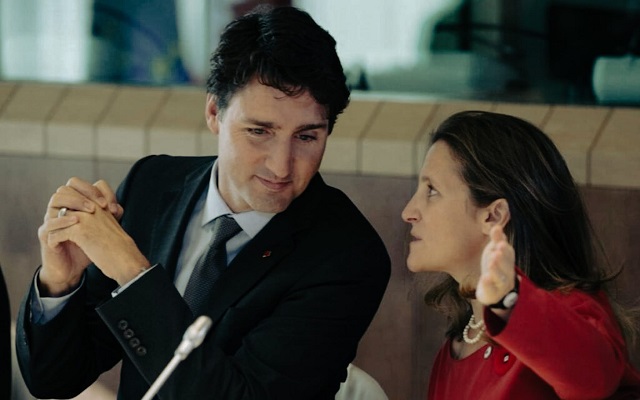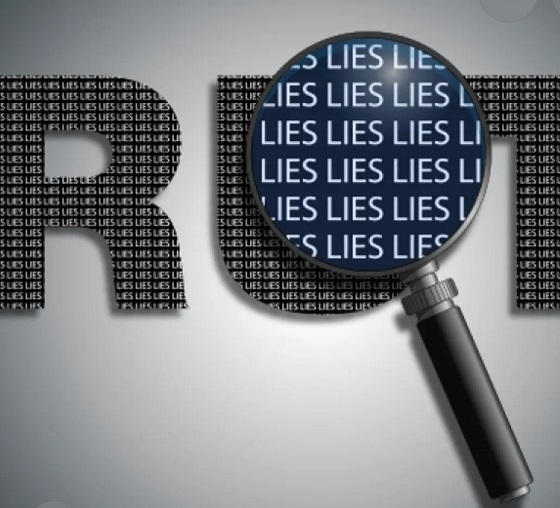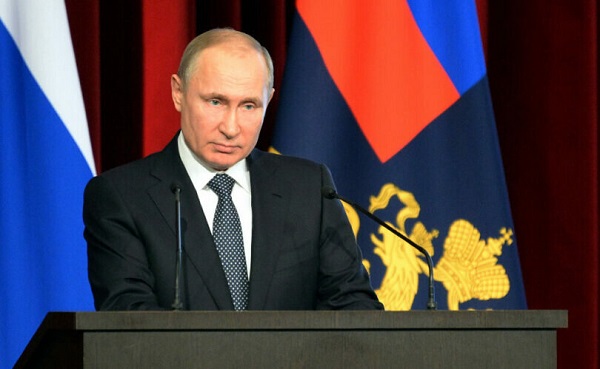National
Unemployment Surges as Trudeau’s Policies Wreak Havoc on the Economy

From The Opposition News Network
By Dan Knight
Let’s get real, folks. You look around, and it doesn’t take a PhD in economics to know something is seriously wrong. Unemployment’s ticking up to 6.6%, and wages? They’re not even keeping pace with inflation. Canadians are working harder than ever, yet the cost of everything—from the food you put on the table to the roof over your head—is spiraling out of control. And who’s at the wheel of this runaway train? Justin Trudeau, that’s who.
Trudeau’s government has unleashed a storm of reckless policies that are driving inflation through the roof. And what’s their solution? They’ve forced the Bank of Canada into a corner, leaving them with no choice but to keep rates above 4% interest rates at 4.25%. The result? Ordinary Canadians are feeling the squeeze like never before, struggling just to make ends meet. This isn’t some fluke; it’s a direct consequence of Trudeau’s economic mismanagement.
But here’s the kicker. While Canadians are tightening their belts, Trudeau’s government is flooding the country with immigrants, artificially inflating the GDP so they can keep funding their ridiculous green energy fantasies. That’s right. Instead of focusing on real, sustainable economic growth, Trudeau is pushing the numbers with mass immigration to cover up the economic disaster he’s created.
Think about that. You’re paying more for your groceries, your gas, your mortgage—all because Trudeau wants to make his government look good on paper. But it’s you who’s footing the bill.
Housing Crisis? That’s On Trudeau
Why can’t you afford a house anymore? Why are young families, people who grew up in this country, completely locked out of the housing market? The answer is simple—*it’s Justin Trudeau’s fault*.
Let’s be clear. The Bank of Canada has openly admitted that the housing crisis is a result of excess demand. But here’s what they’re not shouting from the rooftops: *that demand isn’t homegrown*. Trudeau’s open-door immigration policy has flooded the market, pushing housing prices through the roof. He’s not bringing in record numbers of immigrants because it’s good for Canada; he’s doing it to boost GDP artificially. The problem? That so-called “growth” is driving Canadians out of their own housing market.
You’ve got ordinary Canadians, people who’ve worked their whole lives, now completely priced out of homeownership because Trudeau has cranked up demand with his immigration policies. And while he’s busy making his numbers look good, you’re the one left without a chance to buy a home.
And what’s the solution Trudeau offers? Higher interest rates. That’s right. The Bank of Canada has been forced to keep rates above 4% (4.25%) just to cool down the mess Trudeau created. So now, not only are you dealing with sky-high prices, but the higher interest rates mean if you do somehow scrape together enough to buy a house, you’re stuck with a mortgage you can’t afford.
This isn’t just incompetence. It’s a deliberate strategy by Trudeau to artificially inflate the economy through immigration, all while making life harder for the average Canadian. This is the Trudeau legacy: inflated numbers on paper, while regular Canadians suffer in reality.
The Reality of Trudeau’s Policies
Everything costs more under Trudeau—everything. From your grocery bill to your taxes, life has gotten more expensive. But let’s not pretend this is some random economic downturn. This is the result of deliberate policies designed to make Trudeau look like he’s growing the economy. In reality, he’s burning through taxpayer dollars, and making life harder for the people who are actually *keeping this country going*—you.
And here’s the worst part: it’s not going to get better. As long as Trudeau is in charge, you’re going to keep seeing rising costs, more immigration to mask the economic stagnation, and higher interest rates making it impossible for Canadians to get ahead.
It’s time to stop pretending this is some unavoidable consequence of global forces. This is Justin Trudeau’s Canada, and the reality is, you’re being priced out of your own country.
Why Everything Costs More
Here’s the ugly truth: under Trudeau, everything costs more—much more. Groceries? Skyrocketing. Taxes? You can barely keep track of how many you’re paying. Energy bills? Forget it. These price hikes aren’t a coincidence—they’re a direct result of Trudeau’s reckless economic policies. This isn’t an accident; it’s the result of a deliberate plan to reshape Canada’s economy into some kind of climate-change fantasyland, and you’re the one paying for it.
Trudeau’s inflation problem started with his wild spending. The government kept printing and spending money, and soon enough, we had 8.1% inflation. While they love to pat themselves on the back for bringing it down to 2.5%, the reality is prices aren’t coming down. Groceries are still unaffordable. You’re paying 15-20% more for the basics like meat, vegetables, and even milk. Your wallet hasn’t seen any relief, despite their so-called victory lap.
Now, let’s talk about energy. Trudeau’s green energy agenda is a black hole sucking up billions in taxpayer dollars. Billions spent on unproven clean tech projects, and yet, have you seen your energy bills drop? Of course not. They’ve gone up. The kicker is, while Trudeau spends your money on windmills and electric buses that no one can afford, your gas and heating bills have soared. You’re being told to tighten your belt, but the government is lighting taxpayer dollars on fire.
Oh, and don’t forget taxes. Every time you turn around, there’s a new tax or an increase to an existing one. Carbon taxes, fuel taxes—everything is designed to make life more expensive. You’re paying more at the pump because of Trudeau’s so-called climate policies. Every single tax increase hits the working-class Canadian, the family just trying to get by. Meanwhile, Justin and his globalist buddies are laughing all the way to their next climate summit in a private jet.
A Trump Factor to Watch
And if you think this is bad, just wait. If Donald Trump wins re-election, Trudeau’s green pipe dream might come crashing down. Trump has promised to roll back Biden’s climate change initiatives. No more wind farms, no more billions funneled into solar power plants that never seem to get built. If Trump dismantles these climate policies, Trudeau’s entire green energy house of cards falls apart. Canada is deeply tied to U.S. climate cooperation—without it, Trudeau is left holding an empty bag. And what happens then? *You* will pay the price again as the government scrambles to find another way to fund their utopian schemes.
But it’s not just Trudeau’s climate pipe dreams that Trump could affect. Trump has been crystal clear—he’s bringing back tariffs, and Canada’s already weak GDP will take another hit. With Trudeau’s economic mismanagement, we can’t afford to take another blow. If Trump slams down new tariffs on Canadian goods, we’re looking at fewer jobs, higher prices, and an even deeper recession. Trudeau has left Canada exposed, and we’re the ones who will suffer for it.
Trudeau’s Legacy: Pain for the Average Canadian
Let’s face it—Trudeau’s legacy is one of pain for the average Canadian. He’s bloated the government, jacked up immigration numbers to artificially inflate GDP, and used that growth to justify even more spending. But who’s benefiting? Not you. Wages are stagnant, while the cost of living has gone through the roof. Why? Because the demand for everything from housing to groceries is being driven by immigration policies that Trudeau is using to fund his agenda. This isn’t about building a better Canada; it’s about maintaining the illusion of growth by bringing in more people to mask his economic failures.
Why can’t you buy a house? Because Trudeau’s open-door immigration policy has created an artificial demand for housing that has nothing to do with Canadians. The Bank of Canada has admitted it—excess demand is driving up housing costs. But here’s the kicker: this demand isn’t from Canadians trying to buy their first home. It’s from a government that’s using immigration as a crutch for economic growth that doesn’t actually exist. Meanwhile, you, the hard-working Canadian, are priced out of the market. You’re paying more, and Trudeau doesn’t care.
From taxes to groceries to housing, everything costs more under Justin Trudeau. And it’s all part of a grand scheme to push his climate agenda while using *your* hard-earned money to do it. So the next time you see your grocery bill or try to pay your heating bill, remember: this is the Canada Justin Trudeau built. How much longer can Canadians endure this? How much more can you take?

Please subscribe to The Opposition with Dan Knight .
For the full experience, upgrade your subscription.
Great Reset
Surgery Denied. Death Approved.

Canada’s assisted-death regime has reached a point most people assumed was dystopian fiction and it’s doing so with bureaucratic calm. A woman in Saskatchewan, Jolene Van Alstine, suffering from a rare but treatable parathyroid disease, has applied for MAiD not because she is dying, but because she can’t access the surgery that would let her live.
Read that again. Not terminal. Not untreatable. Just abandoned by a system that has the audacity to call itself “universal.”
Kelsi Sheren is a reader-supported publication.
To receive new posts and support my work, consider becoming a free or paid subscriber.
Her assisted death is scheduled for January 7, 2026.
And the country shrugs. Van Alstine described spending years curled on a couch, nauseated, in agony, isolated, and pushed past endurance. The disease is brutal, but treatable a surgery here, a specialist there. The kind of medical intervention that in a functional system wouldn’t even make the news.
But in Saskatchewan? There are no endocrinologists accepting new patients. Without one, she can’t get referred. Without a referral, she can’t get surgery. Without surgery, she loses her life either slowly through suffering, or quickly through state-sanctioned death.
If you’ve ever lived through pain that warps time…
If you’ve ever had your mind hijacked by trauma…
If you’ve ever stared down suffering with no end in sight…
You know how thin the line can get between endurance and surrender.
And that’s why this story hits differently: it reveals how fragile people become when the system meant to protect them becomes an accomplice in their despair.
Canada frames MAiD as empowerment. As compassion. As choice.
But choice is only real when the alternatives are viable.
If your options are slow agony or assisted death, that’s not autonomy it’s coercion with a friendly tone.
Disability advocates, chronic-pain patients, the elderly, and low-income Canadians have been sounding the alarm for years: MAiD is expanding faster than support systems can catch up. Every expansion widens the chasm between the rhetoric of compassion and the lived experience of those who actually need help.
The Canadian Human Rights Commission itself warned that MAiD is being accessed because people cannot get the services required to live with dignity. And dignity matters. Anyone who has lived on the edge knows this: humans don’t just need survival, we need a reason to keep surviving.
When the healthcare system withholds that, death can look like mercy. This is the part polite society doesn’t want to confront.
Canada’s healthcare system is collapsing. Not strained. Not overburdened. Collapsing.
We have a growing list of citizens choosing death because medicine has become a lottery →
• a quadriplegic woman who applied for MAiD because she couldn’t secure basic home-care support
• veterans offered MAiD instead of trauma treatment
• homeless Canadians considering MAiD because they can’t survive winter
And now a woman denied a simple, lifesaving surgery.
At some point, we have to call this what it is: a nation outsourcing its failures to death. I’ve sat with veterans who couldn’t find themselves inside their own minds after war. I’ve watched people suffer silently because bureaucracy didn’t move fast enough to keep up with their pain.
I’ve coached clients who were one dropped ball, one missed appointment, one shut door away from losing the will to fight.
The lesson is the same every time. People don’t break because they’re weak. People break because they’re left alone with their suffering.
Van Alstine wasn’t offered community.
She wasn’t offered care.
She was offered an exit.
And she took it.
Not because she wanted to die but because Canada didn’t give her any path to live.
We need to stop pretending this is compassionate. Compassion is presence. Compassion is support. Compassion is a surgeon who actually exists, a referral that actually happens, a system that catches someone before they fall into the dark.
If MAiD is going to exist, it must be the last, quiet, grave option not the discounted aisle Canada sends you to when the cost of real care is too high.
A society reveals its soul by how it treats the people who can’t fight for themselves.
Right now, Canada is revealing something hollow.
People will debate the ethics of assisted dying forever. Fine. Debate it. But this is the wrong battleground. The real question is this →
What does it say about a country when death is easier to access than medical care?
Until Canada answers that honestly, we’re going to see more names on the calendar scheduled deaths, stamped and approved — for people who didn’t want to die. They just wanted someone to give them a chance to live.
Canada has failed every single citizen, and not a single person seems to care.
KELSI SHEREN
– – – – – – – – – – – –
SOURCE: https://righttolife.org.uk/
– – – – – – – – – – – –
One Time Donation! – Paypal – https://paypal.me/
Buy me a coffee! – https://buymeacoffee.com/
Let’s connect!
Youtube – https://www.youtube.com/@
Substack: https://substack.com/@
TikTok – https://x.com/KelsiBurns
Economy
Affordable housing out of reach everywhere in Canada

From the Fraser Institute
By Steven Globerman, Joel Emes and Austin Thompson
According to our new study, in 2023 (the latest year of comparable data), typical homes on the market were unaffordable for families earning the local median income in every major Canadian city
The dream of homeownership is alive, but not well. Nearly nine in ten young Canadians (aged 18-29) aspire to own a home—but share a similar worry about the current state of housing in Canada.
Of course, those worries are justified. According to our new study, in 2023 (the latest year of comparable data), typical homes on the market were unaffordable for families earning the local median income in every major Canadian city. It’s not just Vancouver and Toronto—housing affordability has eroded nationwide.
Aspiring homeowners face two distinct challenges—saving enough for a downpayment and keeping up with mortgage payments. Both have become harder in recent years.
For example, in 2014, across 36 of Canada’s largest cities, a 20 per cent downpayment for a typical home—detached house, townhouse, condo—cost the equivalent of 14.1 months (on average) of after-tax income for families earning the median income. By 2023, that figure had grown to 22.0 months—a 56 per cent increase. During the same period for those same families, a mortgage payment for a typical home increased (as a share of after-tax incomes) from 29.9 per cent to 56.6 per cent.
No major city has been spared. Between 2014 and 2023, the price of a typical home rose faster than the growth of median after-tax family income in 32 out of 36 of Canada’s largest cities. And in all 36 cities, the monthly mortgage payment on a typical home grew (again, as a share of median after-tax family income), reflecting rising house prices and higher mortgage rates.
While the housing affordability crisis is national in scope, the challenge differs between cities.
In 2023, a median-income-earning family in Fredericton, the most affordable large city for homeownership in Canada, had save the equivalent of 10.6 months of after-tax income ($56,240) for a 20 per cent downpayment on a typical home—and the monthly mortgage payment ($1,445) required 27.2 per cent of that family’s after-tax income. Meanwhile, a median-income-earning family in Vancouver, Canada’s least affordable city, had to spend the equivalent of 43.7 months of after-tax income ($235,520) for a 20 per cent downpayment on a typical home with a monthly mortgage ($6,052) that required 112.3 per cent of its after-tax income—a financial impossibility unless the family could rely on support from family or friends.
The financial barriers to homeownership are clearly greater in Vancouver. But, crucially, neither city is truly “affordable.” In Fredericton and Vancouver, as in every other major Canadian city, buying a typical home with the median income produces a debt burden beyond what’s advisable. Recent house price declines in cities such as Vancouver and Toronto have provided some relief, but homeownership remains far beyond the reach of many families—and a sharp slowdown in homebuilding threatens to limit further gains in affordability.
For families priced out of homeownership, renting doesn’t offer much relief, as rent affordability has also declined in nearly every city. In 2014, rental rates for the median-priced rental unit required 19.8 per cent of median after-tax family income, on average across major cities. By 2023, that figure had risen to 23.5 per cent. And in the least affordable cities for renters, Toronto and Vancouver, a median-priced rental required more than 30 per cent of median after-tax family income. That’s a heavy burden for Canada’s renters who typically earn less than homeowners. It’s also an added financial barrier to homeownership— many Canadian families rent for years before buying their first home, and higher rents make it harder to save for a downpayment.
In light of these realities, Canadians should ask—why have house prices and rental rates outpaced income growth?
Poor public policy has played a key role. Local regulations, lengthy municipal approval processes, and costly taxes and fees all combine to hinder housing development. And the federal government allowed a historic surge in immigration that greatly outpaced new home construction. It’s simple supply and demand—when more people chase a limited (and restricted) supply of homes, prices rise. Meanwhile, after-tax incomes aren’t keeping pace, as government policies that discourage investment and economic growth also discourage wage growth.
Canadians still want to own homes, but a decade of deteriorating affordability has made that a distant prospect for many families. Reversing the trend will require accelerated homebuilding, better-paced immigration and policies that grow wages while limiting tax bills for Canadians—changes governments routinely promise but rarely deliver.
-

 Business1 day ago
Business1 day agoWhy Does Canada “Lead” the World in Funding Racist Indoctrination?
-

 Automotive2 days ago
Automotive2 days agoTrump Deals Biden’s EV Dreams A Death Blow
-

 Media1 day ago
Media1 day agoThey know they are lying, we know they are lying and they know we know but the lies continue
-

 Automotive2 days ago
Automotive2 days agoCanada’s EV Mandate Is Running On Empty
-

 Focal Points1 day ago
Focal Points1 day agoThe West Needs Bogeymen (Especially Russia)
-

 Censorship Industrial Complex1 day ago
Censorship Industrial Complex1 day agoUS Condemns EU Censorship Pressure, Defends X
-

 Dan McTeague1 day ago
Dan McTeague1 day agoWill this deal actually build a pipeline in Canada?
-

 Banks1 day ago
Banks1 day agoTo increase competition in Canadian banking, mandate and mindset of bank regulators must change














